The Map Detectives: Urban Mystery
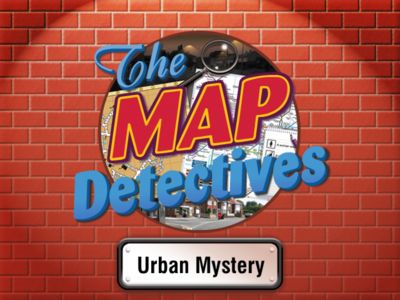
"Map Detectives: Urban Mystery" was an educational game released by Sherston Software. It consists of two puzzle minigames based around an Ordnance Survey town map and the London Underground. Successfully navigating both maps will reveal clues that can be used to solve the mystery posed at the start of the game. I'm uncertain of the exact release date; some websites claim the system requirements are Windows 3.1 with an 80486 processor and a 2x CD-ROM drive. However it was clearly re-released since the version I have access to has executables that couldn't have been created before 2003. There's very little on the web about this game, so this post attempts to give an overview of the gameplay and mechanics of TMD:UM.
Introduction
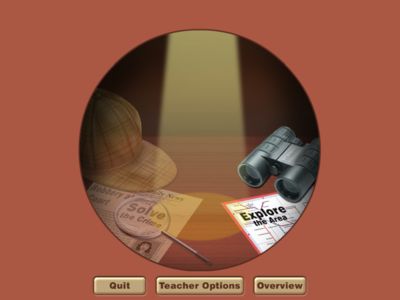
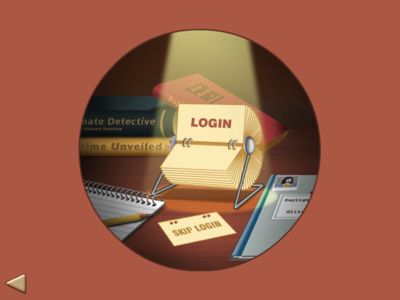
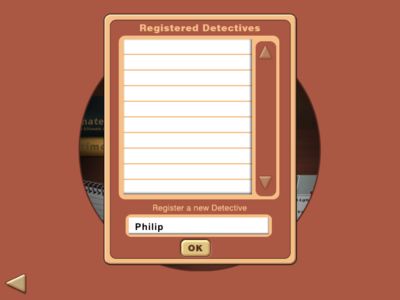
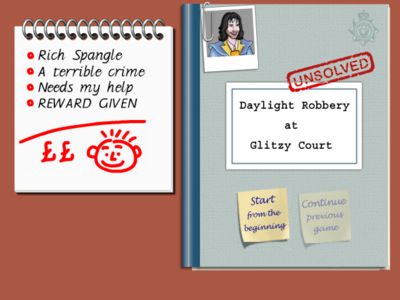
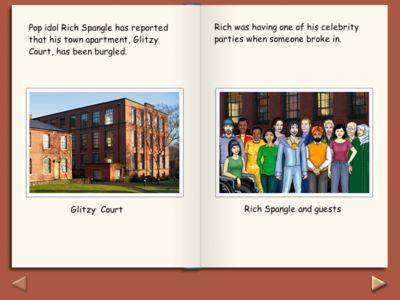
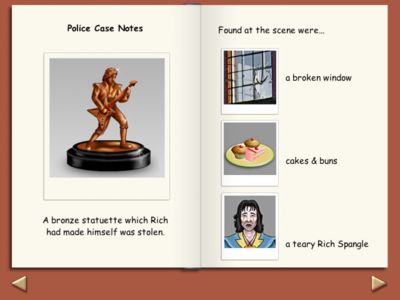
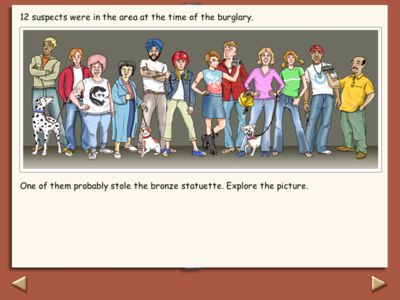
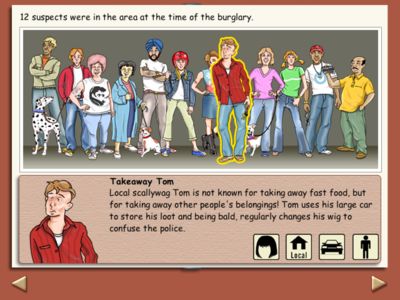
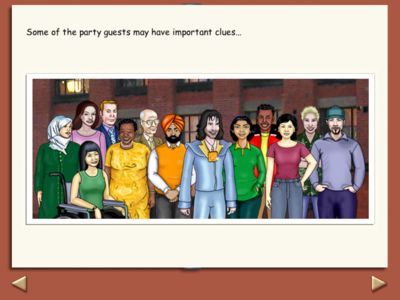
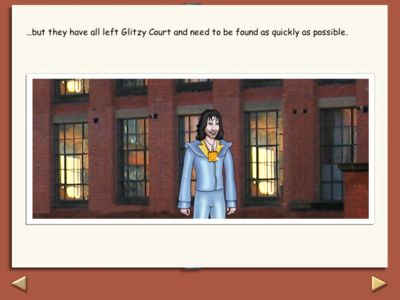
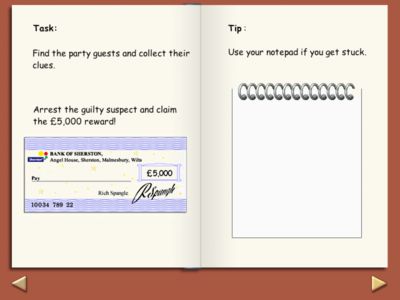
Underground Gameplay
Some of your witnesses are wandering the streets of London so it's time to break out our Oyster card and track them down.
The London Underground is the world's 12th busiest metro system and, as in real life, travelling on it can be daunting. Fortunately you won't have to visit every station — your notepad helpfully tells you where each witness is and the nearest Tube station to them. All you have to do is get there!
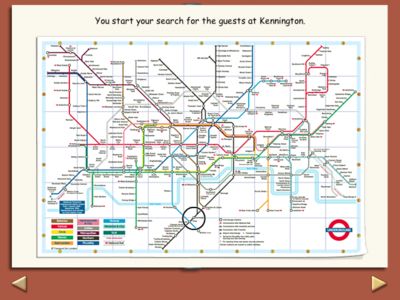
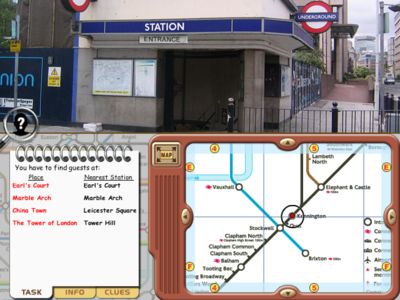
Tools of the Trade
Clicking the button next to the small map opens… the big map. If you're like me and lack an encyclopaedic knowledge of the Undergound network this is where you'll spend the majority of your time. The buttons down the left provide all the tools you'll need to plan and review your route.
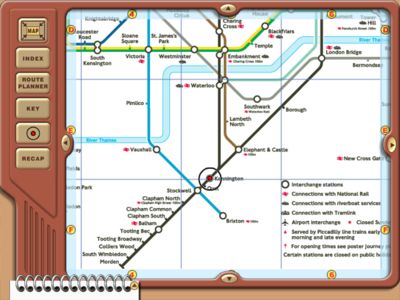
From top to bottom:
- Return to the previous screen.
- An alphabetical index of station names showing which grid square they can be found in.
- The route planner provides a set of tools for drawing on the map. Annotations persist and are also displayed on the small map.
- The map key duplicates the data from the map.
- Recenter yourself with the red dot button.
- The 'recap' button is most interesting: it traces your progress across the map, either forwards or backwards.
Of course you don't need to use the big map. The game came with fold-out copies of both maps for that authentic orienteering experience.
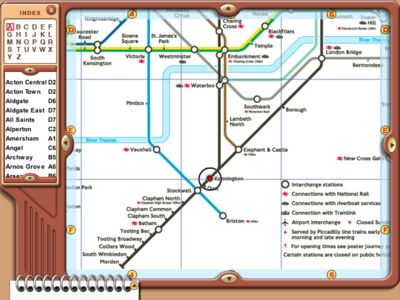
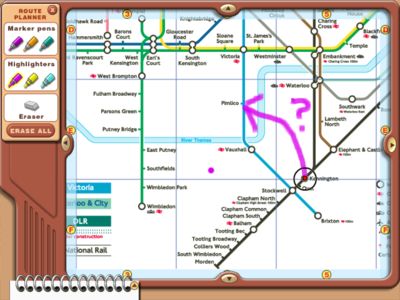
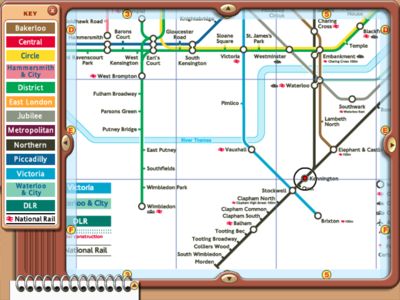
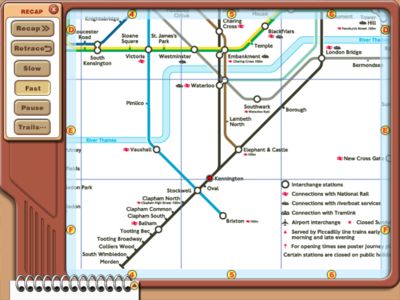
Riding the Rails
When you enter a station you get a choice of railway lines (assuming it's an interchange) and then have to choose your direction of travel. Most stations have only two directions, although where lines branch a third platform mysteriously appears. Whether this is a gameplay concession for the primary school audience or a limitation of the underlying game engine, who knows?
Once you have boarded the train you can travel between one and three stations down the line. The platform images have had the advertising panels altered to promote other Sherston software titles.
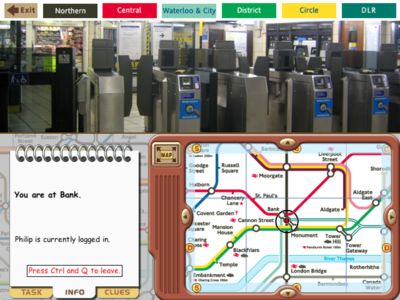
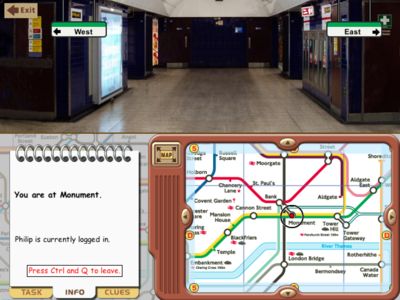
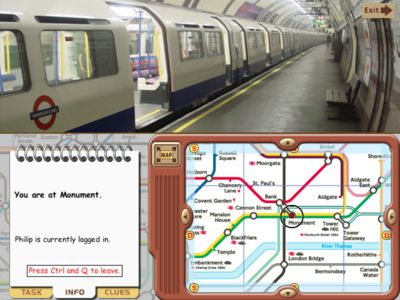
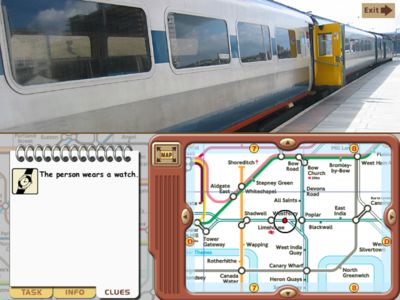
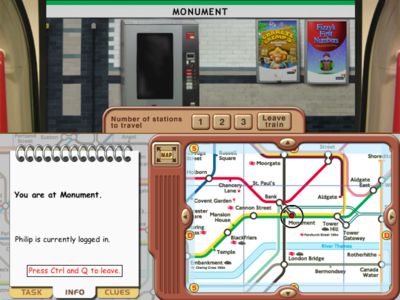
Outside the Station
You can return to the surface at any station, but unless you're caught up to one of your witnesses there's little point in doing so. Your only option for interaction is the magnifying glass at the lower-left which occasionally provides a photo and a few sentences describing the local tourist attractions, but more often informs you rather bleakly that "There is nobody here at the moment". Should you be in the right location you'll encounter a random witness who will provide you with a clue.
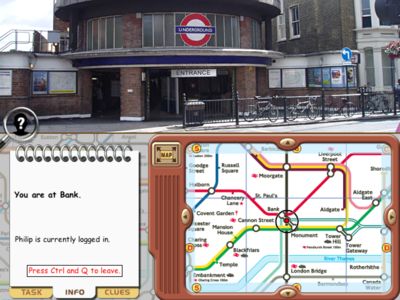
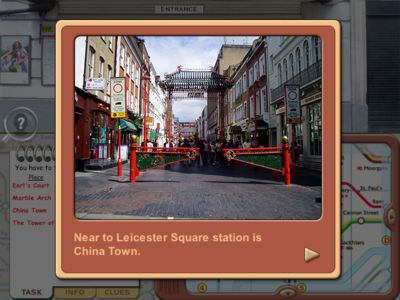
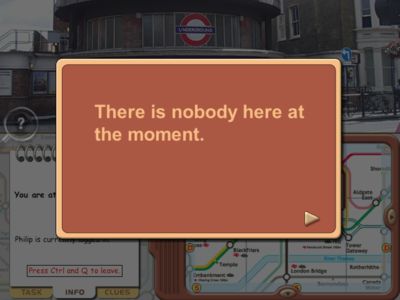
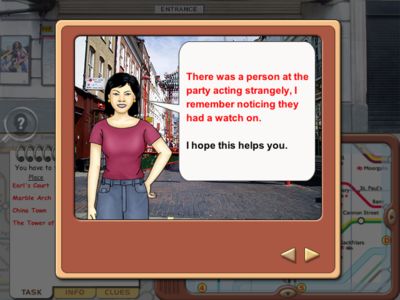
Town Gameplay
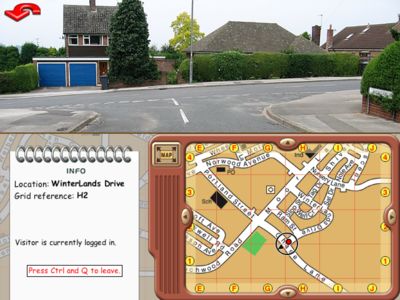
The second half of the game is the town map. I'm not going to go into great detail here: it's basically the same as the Underground map with different background images. The biggest difference is that each junction has different images depending on which direction you approach it.
This half of the game is reskinned from the first Map Detectives game.
Endgame
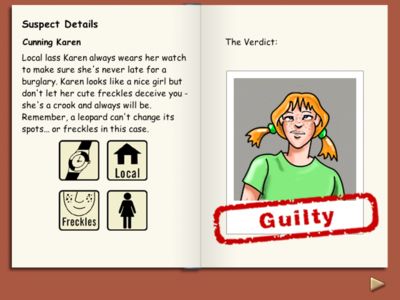
Once you've found enough clues you're presented with the lineup of suspects and asked to identify the guilty party. You have access to your notebook as well as each person's description so this is a simple case of elimination. With the mystery solved it's time to sit back and cash our reward check!
Teacher's Options
This was designed to be an education game for school groups, so the main menu offers a separate screen for the teacher to tailor the game to their students, The options available are extensive and you can crank the difficulty up really quite high. The pasword options appears to be hardcoded and without the manual you won't be getting back into this screen if you enable it — so don't do that.
The teacher also has access to the records of all saved games and their completion times.
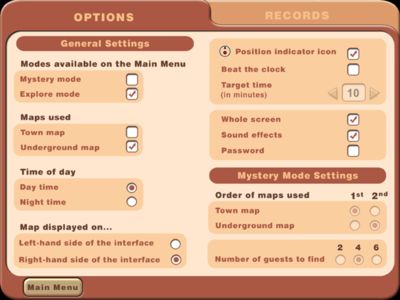
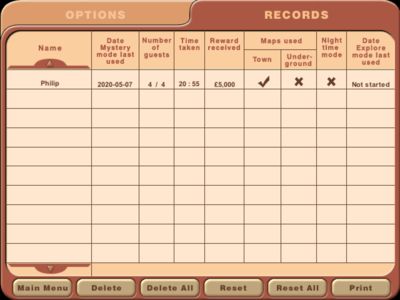
Final Verdict
This is a surprisingly well put together game! There's a wide variety of graphics so each locaton of the map feels different. The actual mystery solving and exploration mode are fairly bare-bones but the focus of the game is clearly on map reading and navigation so I can forgive that. One complaint I did have is that the user interface is almost exclusively controlled with the mouse. Being able to scroll the map with the arrow keys would have been welcome.
Had this been available when I was in school i would have enjoyed using it.